Andy Warhol: From A to B and Back Again
October 20, 2019 through January 26, 2020
Art Institute of Chicago
111 S Michigan Ave, Chicago, Illinois 60603
There’s a problem with “celebrity” in its current form in America. This, in part, is the fault of the legacy of Andy Warhol. In present day application, we Americans have come to celebrate excessive unhealthy behavior, disinformation in social media, idiotic actions, untruthful fly-by-night news pundits, and a flurry of other odious activities and individuals like no other culture in the history of humankind. Digesting this cacophony is unsettling and often completely paralyses societal rationality. Beyond being a seminal artist and interesting character, Warhol was a modern day prophet who understood the strength of iconic imagery, the importance of surface presentation, and the direction our capitalistic society was heading. In the current exhibition, Andy Warhol: From A to B and Back Again, at the Art Institute of Chicago (AIC) there is clear evidence of this observation.
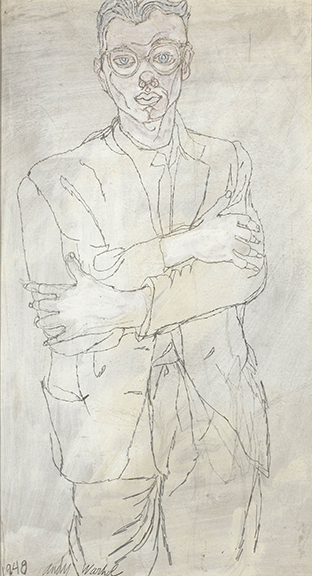
Janet and Craig Duchossois Collection. © 2019
The Andy Warhol Foundation for the Visual Arts, Inc. / Artists Rights Society (ARS), New York.
On view at AIC is the first retrospective organised by an American institution in 30 years of the expansive work of Wahol. Using new research and scholarship that has been compiled since the death of the artist in 1987 at the age of 58, the Whitney Museum of American Art, New York, appears to have put together an exhibition that is accessible, ambitious, and telling of the voice of an individual who continues to have a profound impact on contemporary art production and our wider culture. Gathered here are more than 400 works that cover his extensive output in a variety of media (drawings, paintings, prints, sculpture, videos, archival and printed material, installation, and films). From early drawings produced in the 1940s to late career collaborations with Jean-Michel Basquiat in the 1980s, one will encounter a clear understanding the artist placed on the intersection of artistic expression, celebrity culture, and self-promotion. His approach to portraiture and self-portraits are precursors that have ushered in the “selfie” era.
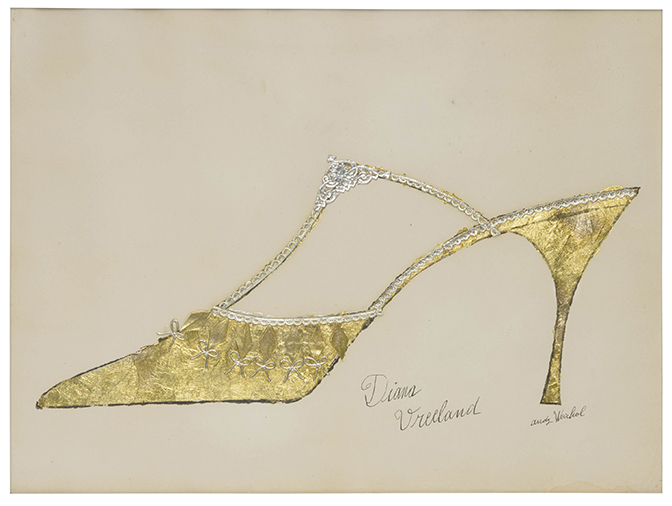
Andy Warhol (1928-1987) was born and raised in Pittsburgh, Pennsylvania to working-class emigrants from Mikó, Austria-Hungary. Upon graduating from Schenley High School in 1945, he initially planned to be an art teacher, but decided to study commercial art at the Carnegie Institute of Technology (today, Carnegie Mellon University). The late 1940s through the 1950s were dedicated primarily to advertising and commercial art, where he produced illustrations for Glamour magazine and the shoe manufacturer Israel Miller. Though he had previously exhibited, it was in November 1962 that he held his first solo Pop art exhibit at Eleanor Ward’s Stable Gallery in New York City. This show introduced a handful of the artist’s most recognisable images, 100 Soup Cans, 100 Coke Bottles, 100 Dollar Bills, and Marilyn Diptych. This exhibition and the works included offer in-depth insight into his oeuvre defining investigations and clarify Warhol’s fascination with how the banal and recycled popular imagery detailed the day’s visual culture. These works laid a foundation where common items become significant due to strategies of appropriation and repitition. Consider this when viewing a meme the next time you stumble upon one when looking for a bit of irony and humour online.
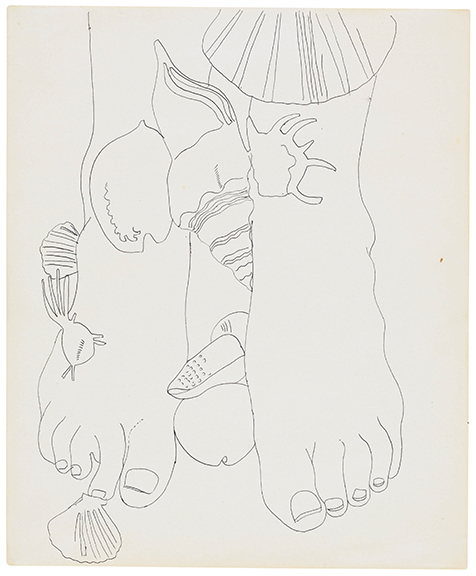
Muriel Newman Fund. © 2019 The Andy Warhol Foundation for the Visual Arts, Inc. / Artists Rights Society (ARS), New York.
The 1960s were a highly productive artistic period. Using learnt skills from working in the commercial design industry, Warhol employed a coterie of assistants, headed by Gerard Melanga, similar to that found at modern day advertising studios. “The Factory” was unique. In a large industrial space at 47th Street (later moved to Broadway) painted reflective silver and covered in aluminium foil innovation ensued via mass production and a refinement achieved due to a machine-like studio assembly. Collective and hierarchal strategies of production of fine art is not new. These studio practices date back to the High Renaissance (perhaps, even before). The difference with Warhol was his ability to create a platform for analysing modern celebrity (and aligning himself with just this). There’s paradox when looking at presented materials that bring attention to the flaws. This can be seen in the inconsistencies in application. The haphazard and outward visual defects are deliberate in noting what our misconceptions or ignorance allow the meaning to be. Our wide-reaching cultural mishaps and views become an interesting note to entertain when considering the swaying opinions invoked by Warhol. There is genious in the way the artist controlled his image that is akin to the way we vet the content we post online in social media to portray our life and self today.
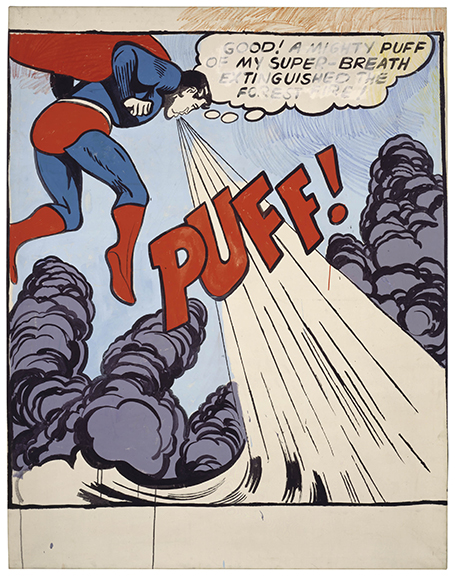
The Andy Warhol Foundation for the Visual Arts Inc. / Artist Rights Society (ARS), New York. Superman © and
™ DC Comics, courtesy DC Comics. All rights reserved.
In 1968 Warhol was almost murdered along with assistant, Mario Amaya, at The Factory by Valerie Solanas. This event would define his mental and physical condition to his death. The artist was not unfamiliar with surrounding himself with unstable persons. The Factory evolved into that place where myth and reality merged. It was a NYC destination where one could cross paths with David Bowie, Keith Haring, Liza Minelli, Keith Richards, William S. Burroughs alongside weirdos, hanger-ons and those who resided in the fringes. It is remarkable (somewhat insane) to consider his output into the 1970s and late collaborations into the 1980s when considering the intense activities that surrounded him. A large amount of previously unseen works are revealed that illustrate his interest in experimental film, new art practices like installation and time-based arts. It’s is daunting and most admirable to see his ongoing ability to explore new media late in life. Warhol had what most artists wish for: a work ethic that is sustained over a lifetime while preventing oneself from getting caught in a rut.
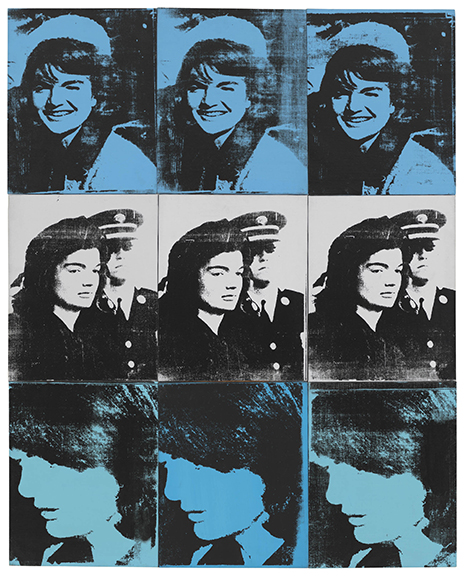
The revealing of imperfections in physical processes to the viewer has been a point of contention in the work of Warhol. It was not uncommon for mid 20th century art critics to define Warhol and other Pop artists as “minor” due to content selection and processes employed. In describing this movement, influential mid-20th-century art critic Clement Greenberg used distinct terms like “easy” and “tricks” to describe efforts when discussing the loosely-knit Pop art movement’s practice as part of the film Painters Painting: The New York Art Scene 1940-1970 by Emile de Antonio (1972). Though seen as antiquated today, Greenberg’s observations were (somewhat) accurate and have become a canon reading of art of this time period. This gets debunked here…if not before. Whether a fan or not, Warhol’s central voice is not “minor”…it is the mainstream, and highly influential and relevant. This is evident in the larger-than-life screen prints, paintings, and time based works. This is a “must-see” show for anyone that has a pulse with interest in the visual arts. Simply put, Greenberg’s Abstraction Expressionists (de Kooning, Pollock, Kline, Rothko) established the need for the global art world to look west, beyond the pond for something new and refreshing. And, with Warhol et al, American art became the center-piece, where the artwolrds attention shifted, once again, and focused upon content and ideas that were distinctly American.
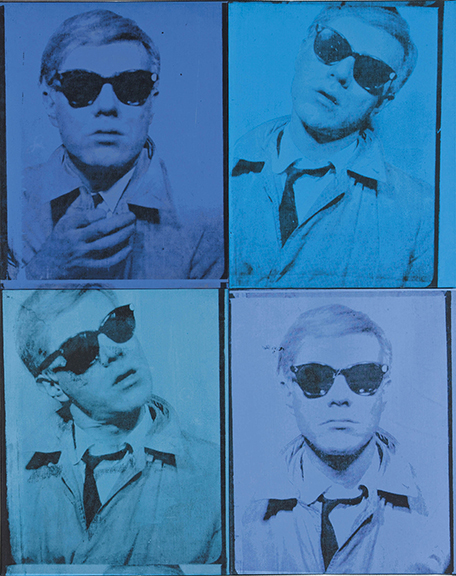
The Andy Warhol Foundation for the Visual Arts, Inc. / Artists Rights Society (ARS), New York.
Please do (not) forgive me for returning to the perfunctory suggestion that the legacy of Warhol’s practice created our contemporary dilemma. His insight and application validates the present, regardless of ideology or taste. His self-portraits are our “selfies”, the rehashed imagery of celebrities are our “memes”, and his obsession with the everyday are our “real-time” reality television series, complete with observational cameras in the toilets. It’s felt here that Andy Warhol was the most American of American artists…full of glaring flaws, ideological insecurities, an obsession with success, and an ability to translate and voice these occurrences due to a freedom that we have today. This ability, in itself, is something worthy of cherishing. One needs only to be reminded that this is uncommon in many parts of the world due to political ideologies.
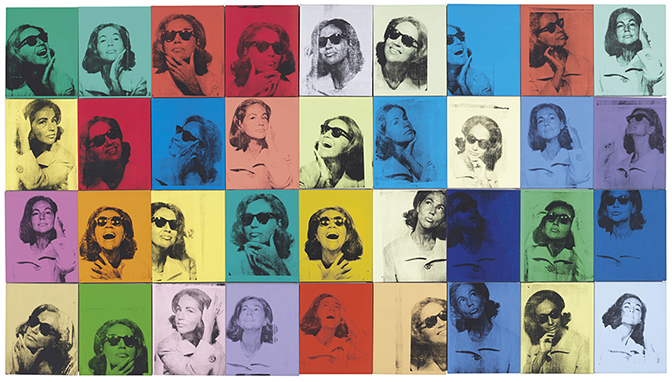
Without doubt, I will do another tour of Andy Warhol: From A to B and Back Again. There is need of time spent purely looking at the images without background. I want to approach unencumbered. I want to toss my mind’s eye aside and be fresh. This is impossible. Warhol has been a constant (struggle) since my art studies in the 1980s. In observing and listening to casual passerbys who visit the exhibit I’m reminded of the importance of 1st person encounters and how even in this controlled setting each takes something different away. An hour, day or week from now much of what was encountered will fade. However, I’m fairly confident the Warhol’s ideas on celebrity, self, and modes of production will still be considered, and reconsidered as new iconography and mythos unfold.
Additional images from Andy Warhol: From A to B and Back Again:
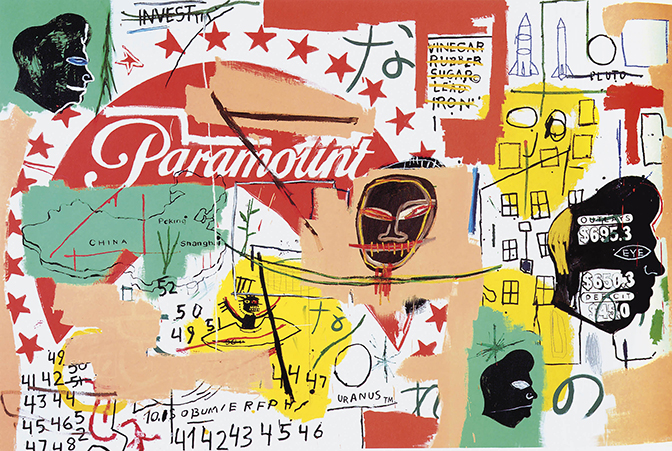
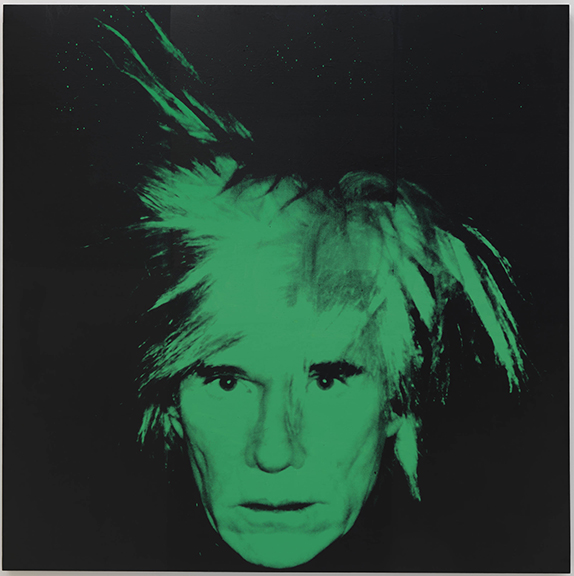

For additional information on Andy Warhol and this exhibition, please visit:
Art Institute of Chicago – https://www.artic.edu/exhibitions/2937/andy-warhol-from-a-to-b-and-back-again
The Andy Warhol Museum – https://www.warhol.org
Biography – https://www.biography.com/artist/andy-warhol
The Andy Warhol Foundation for the Visual Arts – https://warholfoundation.org
Tate Gallery – https://www.tate.org.uk/kids/explore/who-is/who-andy-warhol
Artnet.com – http://www.artnet.com/artists/andy-warhol/
Museum of Modern Art – https://www.moma.org/artists/6246
Exhibition review by Chester Alamo-Costello


